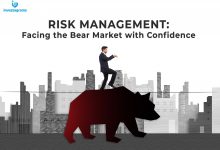The strongest emotions every person could ever have are fear and greed and it is responsible for burning all the possible profits of a trader.
Yesterday’s Philippine Stock Exchange index (PSEi) closed at 6,884.38 or down by 116.76 points which caused panic and breakdown of some traders who do not have a common trait that all successful people share – RISK MANAGEMENT.
Trading without proper Risk Management can wash away all your hard-earned money or on lighter cases, extreme paper loss in your portfolio and it will leave you with a bad disposition and less confidence. You have to realize that before you trade in the stock market, you should have the following risk management traits every trader should have to protect your trading plan and support your strategy:
1. DUE DILIGENCE
Some of the traders are gaining profit because they are trading what is trending or active for the day – we call it as trend following in the world of stock market. Trend following or trend trading is a strategy which tries to take advantage of any short, medium or long-term moves that play out in various markets. But this kind of technique is risky if you do not have the proper knowledge and trading skills in the first place. It may sound like a broken record, but due diligence will allow you to gain essential information and vet out a possible new investment. As a responsible trader, you may want to follow these steps to give you a balanced overview of the pros and cons of your stock pick, and allow you to make a rational and logical decision:
- Read disclosures of the company from PSE Edge
- Be updated about the company’s latest news
- Monitor Financial Statements and Balance Sheets and asses Valuation Multiples
- Observe Management and Share Ownership changes
- Watch and learn from the Stock Price History
2. STOP LOSS
Don’t let your emotions overcome your decision. This is one of the problems of some of the traders and probably the most important aspect of risk management. “What if the market goes up?”, ”It’s a loss why I would sell it?”, “I lost a lot and I can’t go back now” – these are just some of the questions that traders are asking. A disciplined mind is very critical and having a stop loss let’s you take a manageable loss as compared to bigger ones. Limit the losses before it goes deeper. It lets you live to fight another day.
3. PROFIT TAKING
If you feeling greedy during your stock plays, the possibility of losing your supposed-to-be gains are at 100%. Why? Because you’re so eager to have a higher profit. It is like playing in the casino. When you won, that covetous part of human nature will tell you to stay for one more round and instead of taking home your gains, you play even more and hope that you will win over the coming games but often times, it will only bring you back to where you started – at zero profit standpoint. How to prevent this scenario? Set your take-profit (TP) order and don’t trade with your emotions. Trade with your head, not your heart.
4. POSITION SIZING
Position sizing is a part of your trading system that covers “how much” you wanted to trade at a particular time or scenario and determine the part of your overall account value that you will allocate to one trade. This system lets you not over-bet or under bet on a trade. It is essential to risk a certain percentage of your account on each trade. Never ever gamble more than you initially wanted to risk. It’s a matter of discipline that values your capital preservation.
5. EMOTIONAL CONTROL
When trading, the last thing you would ever associate with is human emotions. It is without a doubt this is the final component of our risk management traits and must be discussed. Simply put, if you don’t control your emotions every time you trade, then I assure you that you will do something that you might regret for the rest of your life and worst case scenario – wipe away all your equity.
According to financial columnist Jason Zweig, “Many of the world’s best investors have mastered the art of treating their own feelings as reverse indicators,” and we can only hope that you apply this too to protect yourself from sinking the edge. You need to know what are your own biases and shortcomings so that you can learn to avoid them.
